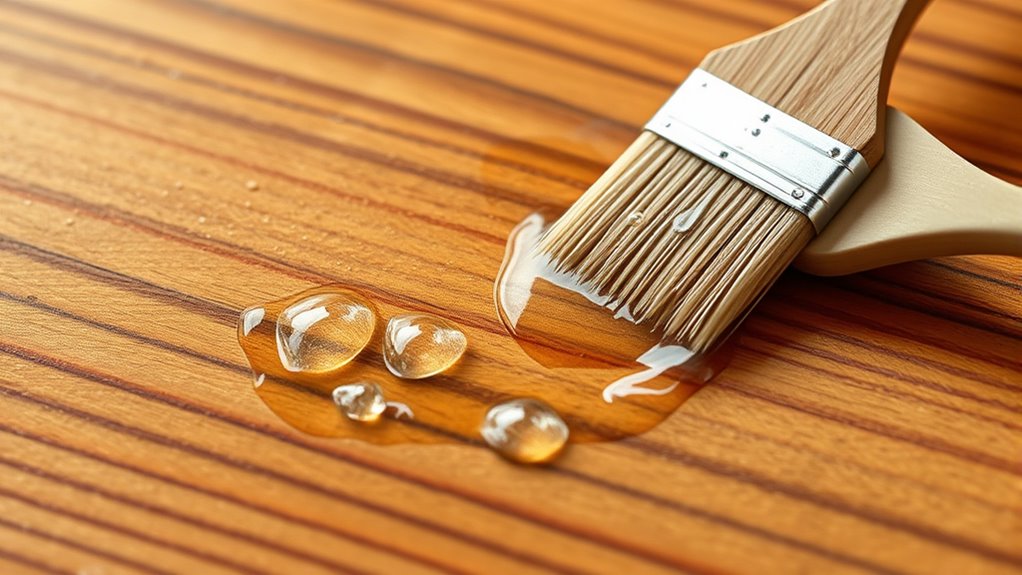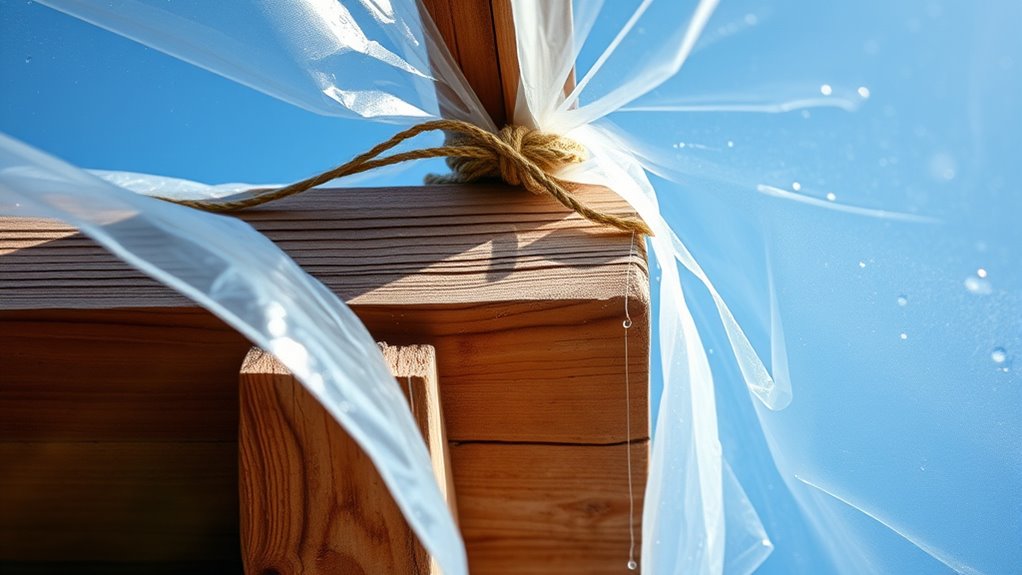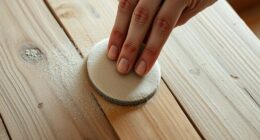To protect wood from moisture, you should start with proper surface prep by cleaning and removing old coatings. Applying natural oils penetrates deeply, creating a moisture-resistant barrier while enhancing the wood’s natural look. Sealants and stains can add extra protection and improve appearance, but require reapplication over time. Regular maintenance, including cleaning and inspecting for damage, helps prevent moisture intrusion. Keep these tips in mind, and you’ll learn more about keeping your wood surfaces durable and beautiful.
Key Takeaways
- Use natural oils or sealants to create a moisture-resistant barrier and enhance wood’s natural appearance.
- Properly prepare surfaces by cleaning and removing old coatings before applying protective treatments.
- Apply protective products along the grain and reapply every 1-2 years for ongoing moisture protection.
- Consider synthetic sealants for outdoor furniture, but ensure correct surface prep and periodic maintenance.
- Regularly inspect for signs of moisture damage and maintain protective layers to prolong wood durability.

Protecting wood from moisture is vital if you want your surfaces to stay durable and beautiful over time. Moisture causes wood to swell, warp, rot, and decay, so understanding how to shield it effectively makes all the difference. There are various moisture protection methods, each suited for different needs and environments.
Protecting wood from moisture is essential for lasting beauty and durability.
Natural oils like linseed, tung, and Danish oil are popular choices because they penetrate deep into the wood fibers, creating a moisture-resistant layer that enhances the natural color and luster of the wood. Applying these oils properly involves removing old coatings and thoroughly cleaning the surface before you start. Use a brush or lint-free cloth, following the grain for even coverage. Let the oil sit for about 15 minutes to allow maximum absorption, then wipe off any excess. You can reapply a second coat if necessary, but avoid overdoing it, as too much oil can cause a cloudy or uneven appearance. Regular maintenance with natural oils can also help maintain the wood’s moisture barrier over time.
Synthetic sealants, such as polyurethane, varnish, and lacquer, form a physical film barrier that prevents moisture from seeping into the wood. These are excellent for outdoor furniture and decks because they offer long-lasting protection. However, they require proper surface prep—removing old paint or coatings and cleaning thoroughly—and tend to alter the wood’s natural texture and appearance.
Keep in mind that film-forming sealants can trap moisture inside if applied improperly, which may accelerate deterioration. They also degrade over time when exposed to UV rays, necessitating periodic reapplication to maintain their protective qualities.
Stains combined with sealers are another option, providing both color and waterproofing in a single application. They’re especially useful for exterior surfaces where aesthetics matter alongside moisture resistance. Proper surface preparation is vital here as well—sanding smooth and removing contaminants ensures better adhesion and penetration.
In addition to these coatings, chemical preservatives can be applied through pressure treatment or surface application to protect against moisture and decay, particularly for structural or outdoor wood. Selecting the appropriate protection method based on the environment can significantly extend the lifespan of your wood.
During transportation or storage, vapor wraps are often used to shield wood from moisture while still allowing breathability. This prevents fiber deterioration without trapping internal moisture.
For ongoing protection, regular maintenance is key. Reapply natural oils every 1-2 years for outdoor wood, and inspect sealants periodically—recoating when signs of wear or damage appear. Clean surfaces before reapplication to maximize effectiveness and prevent trapped moisture.
Monitoring your wood for swelling, discoloration, or fiber damage helps you catch issues early, ensuring your wood remains protected. Proper preparation, consistent maintenance, and choosing the right moisture barrier will keep your wood surfaces looking great and lasting longer. Additionally, selecting appropriate protection methods in accordance with local regulations and environmental conditions will ensure optimal preservation over time. Being aware of warning signs of moisture damage can help you address issues promptly before they cause significant harm.
Conclusion
Think of your wood as a loyal friend, standing strong against life’s storms. By shielding it from moisture, you’re giving it a sturdy umbrella, allowing it to thrive and shine. When you take these simple steps, you’re not just preserving a material—you’re safeguarding a symbol of strength and resilience. With proper care, your wood will continue to symbolize durability and beauty, weathering whatever comes its way, just like a steadfast companion through every season.









